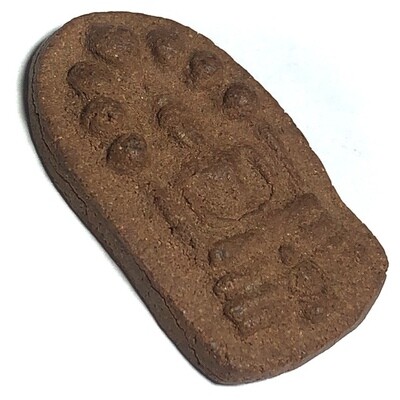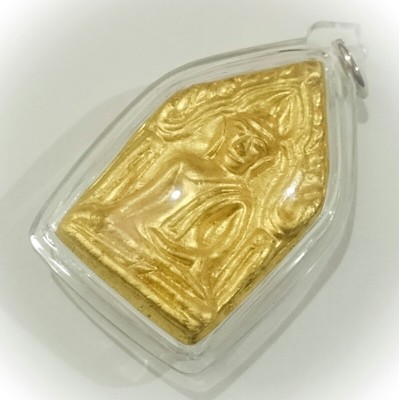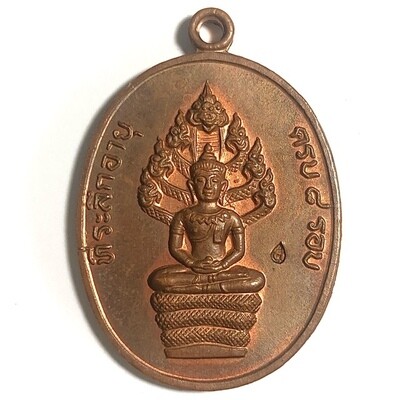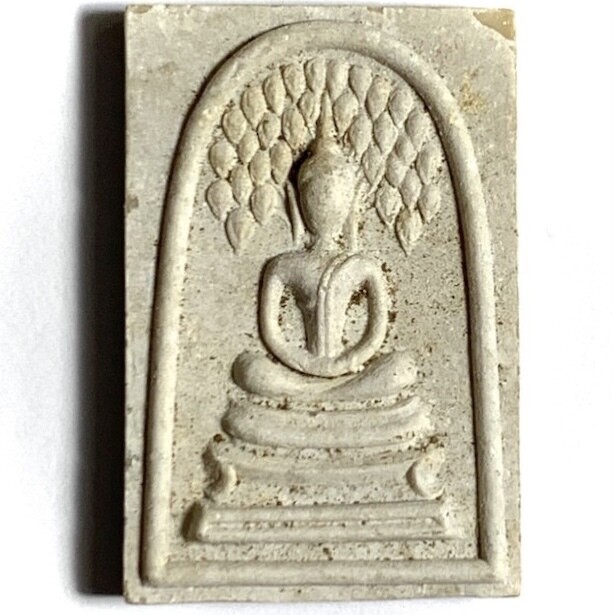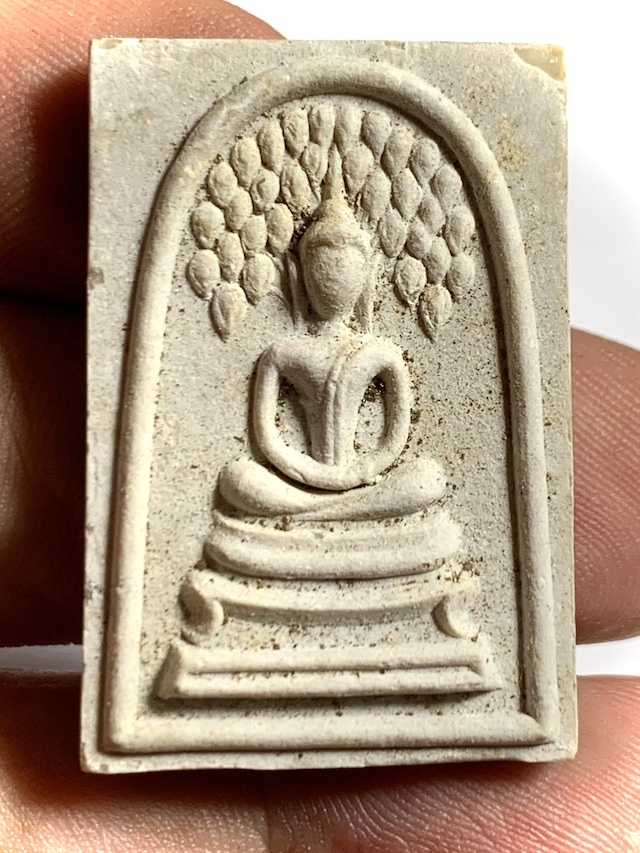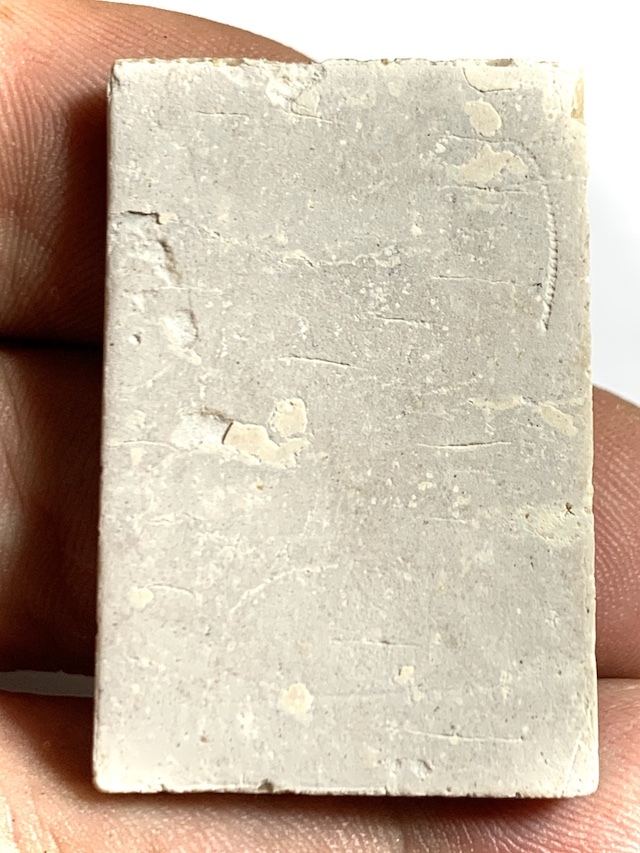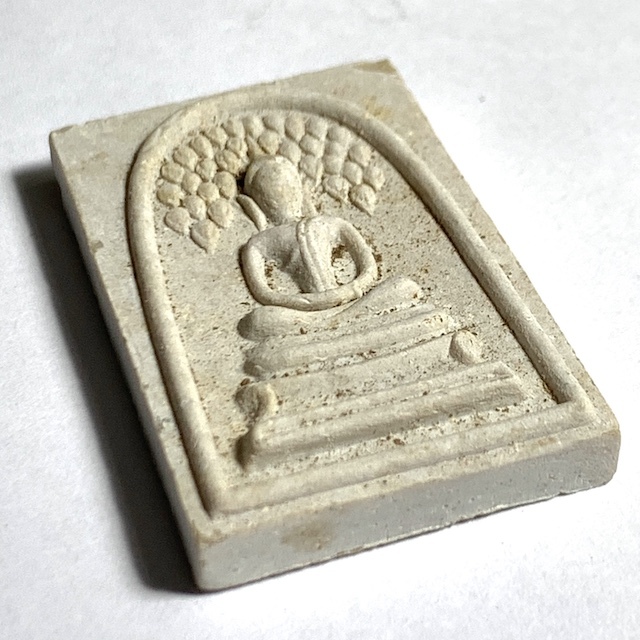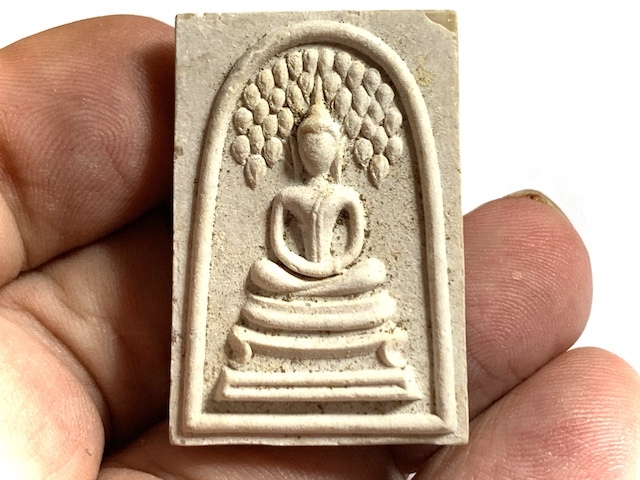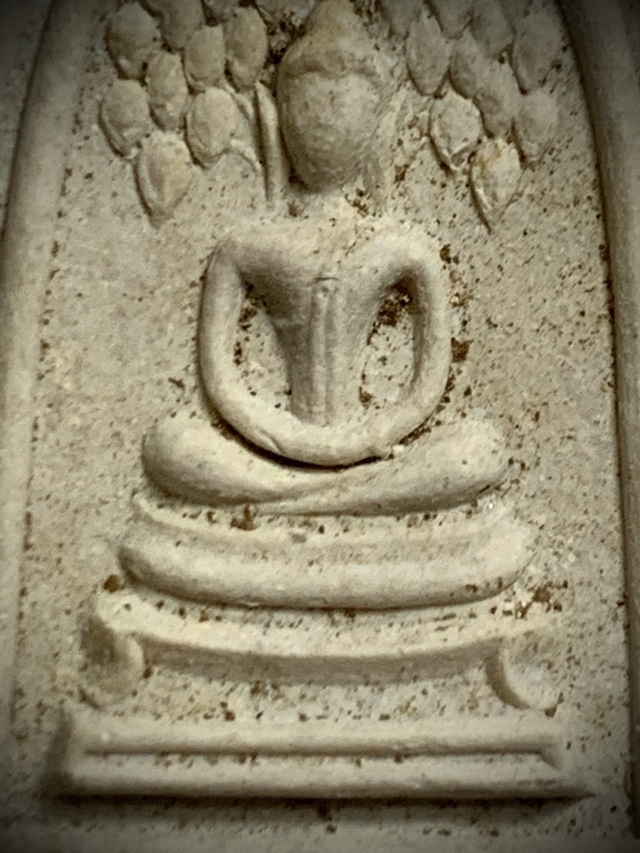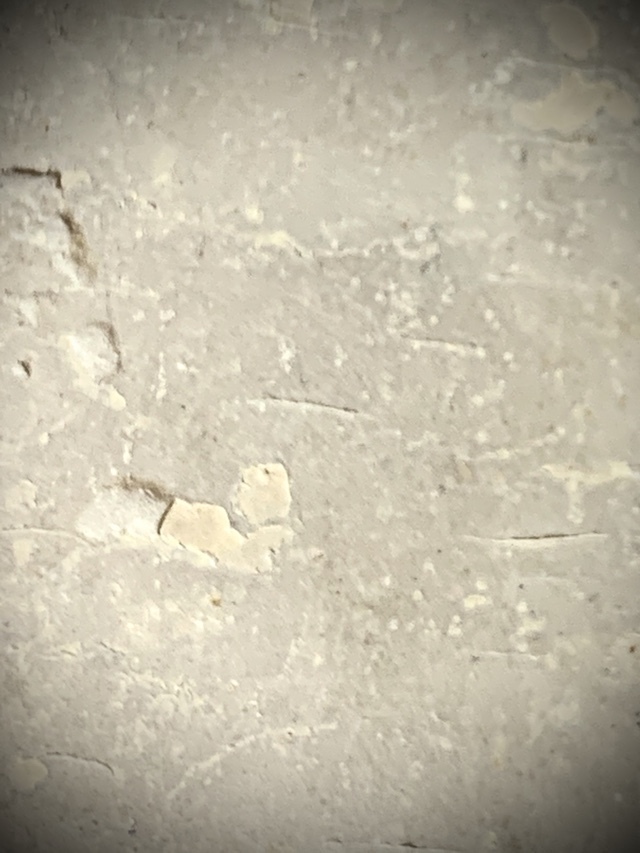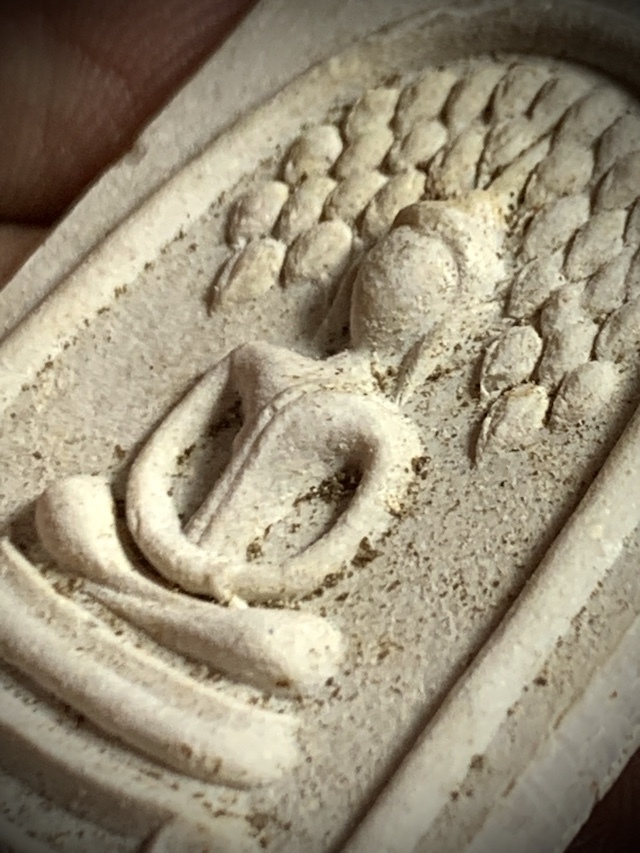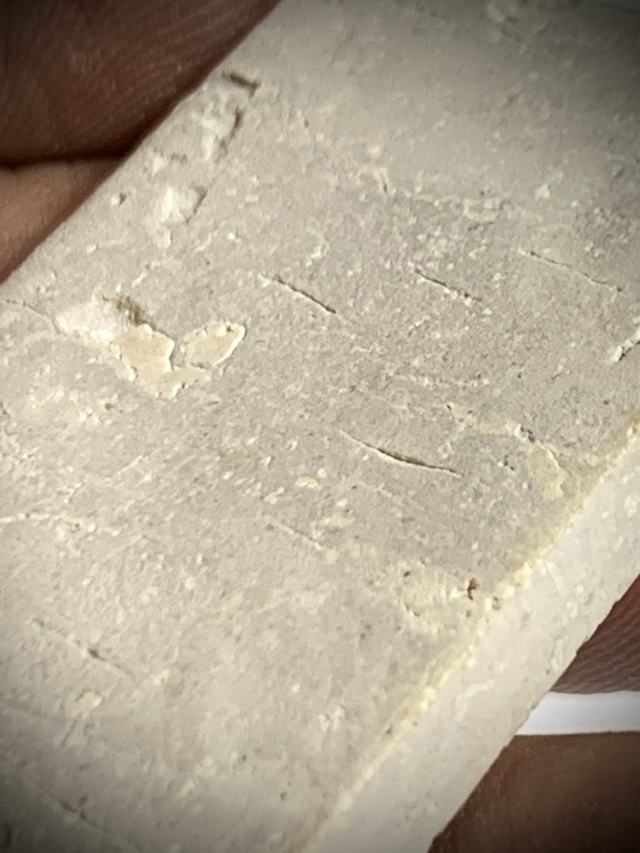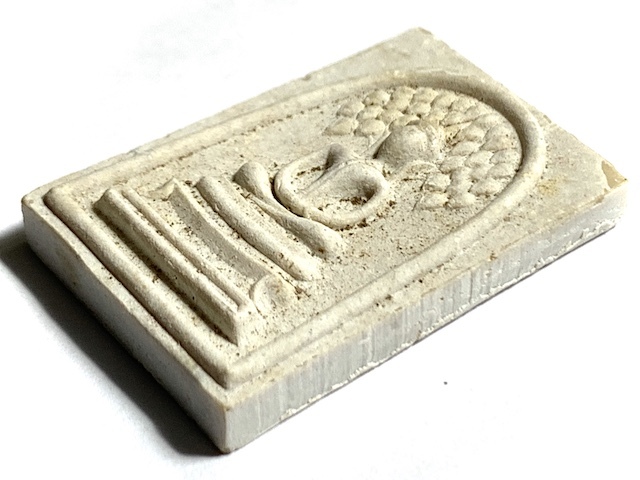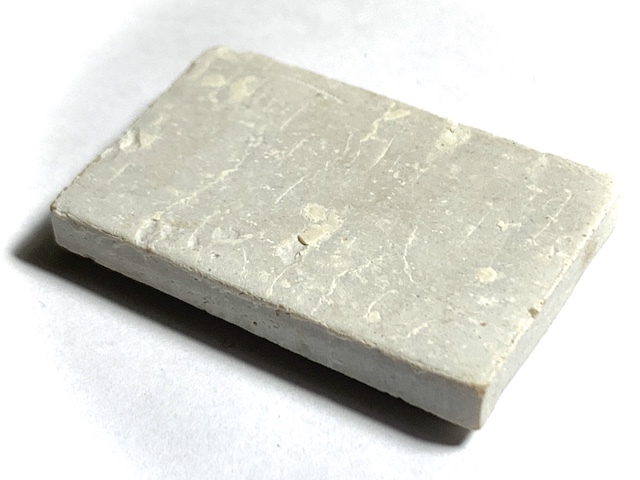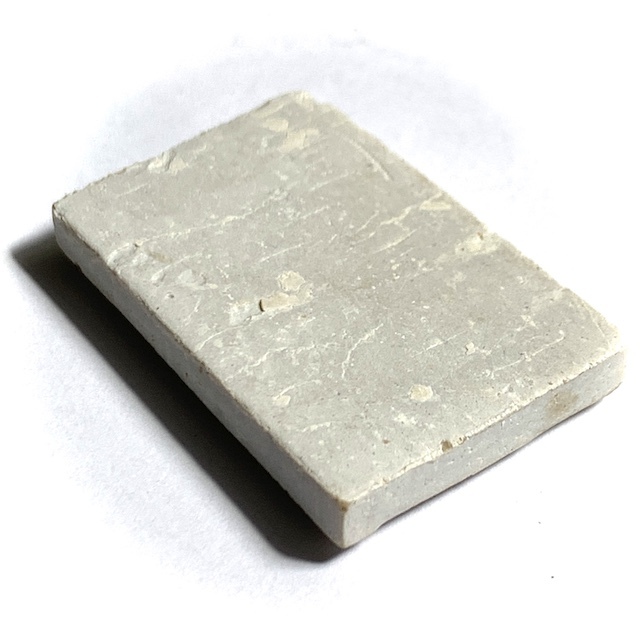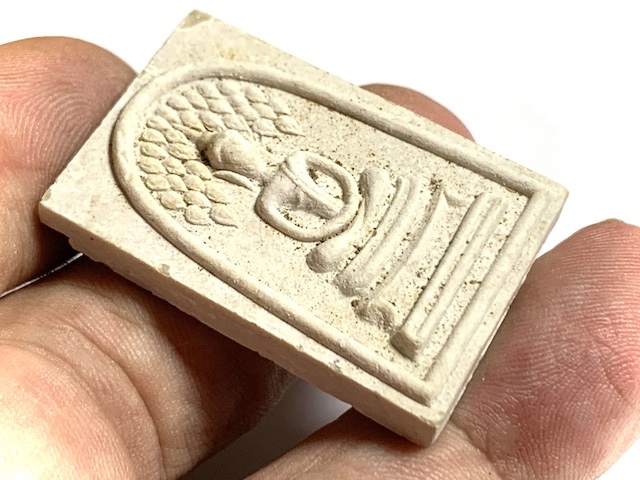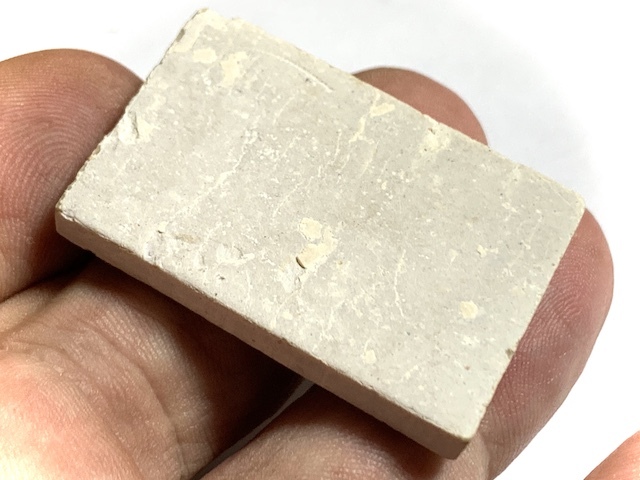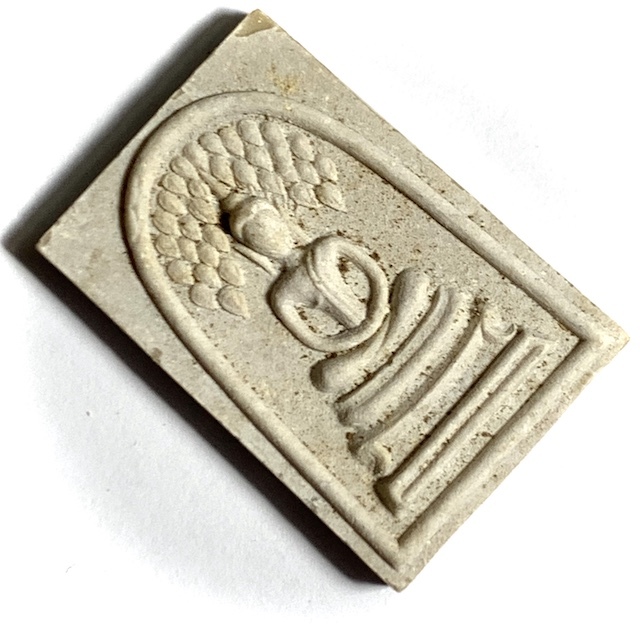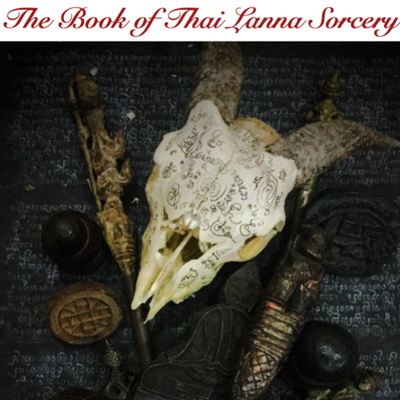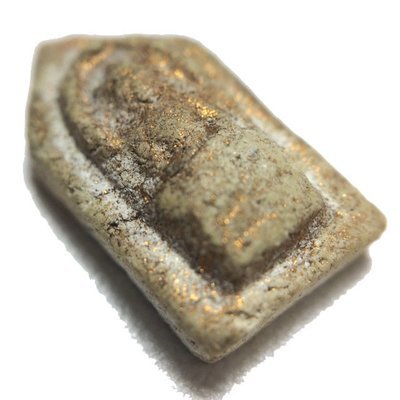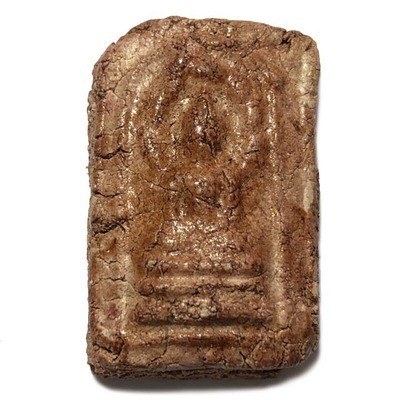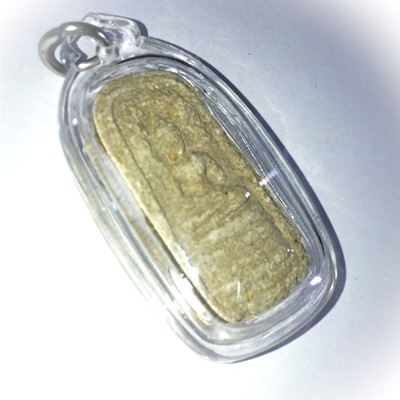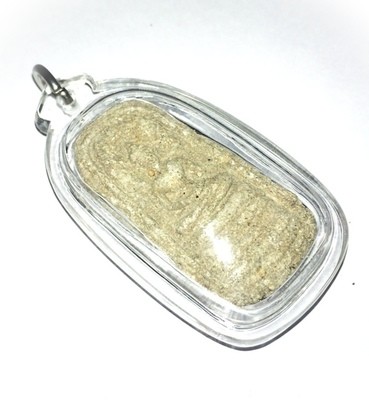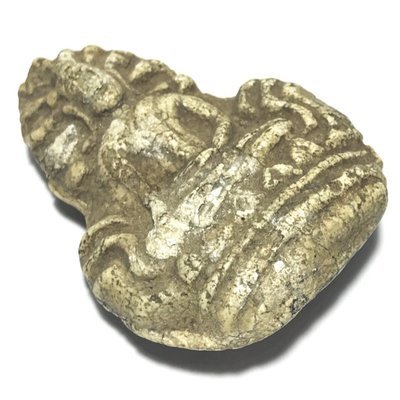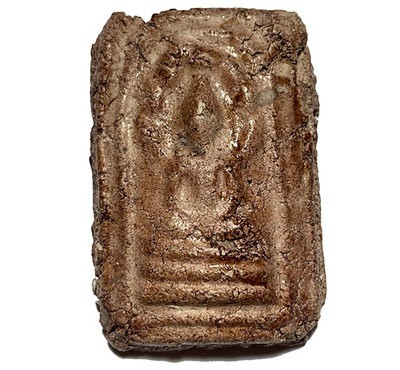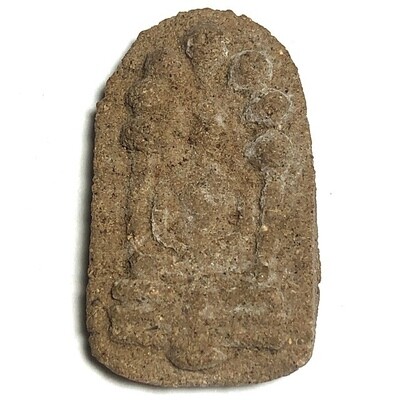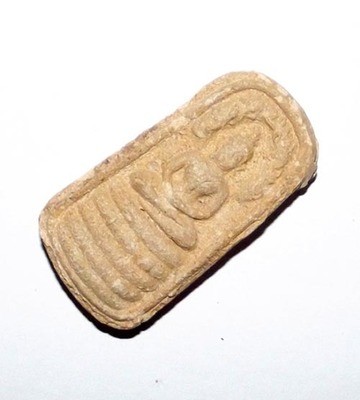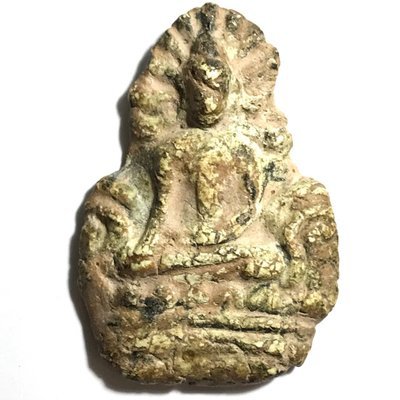Presenting a tiny but powerful and rare classic amulet from one of the Great Khao Or Masters of the 20th Century, Rian Glom Lek Hlang Chedi 2505 BE Nuea Tong Daeng Miniature Guru Monk Coin Por Tan Klai Wajasit
This Sacred amulet of the Great Khao Or Master of Nakorn Sri Tammarat, Master of Wat San Khan and Wat Pratat Noi, is a very rare amulet from Por Tan Klai’s 2505 BE Blessing Ceremony Edition, and is considered a ‘Jaek mae Krua’ type amulet (meaning ‘give to the kitchen maids and temple helpers’), which is suitable not only for men, but due to its miniature size, a perfect amulet for ladies or children to wear.

Rian Glom Lek 2505 BE Por Tan Klai Wajasit Wat Suan Khan
The 2505 BE edition of amulets of Por Tan Klai, is a highly preferred edition, which saw his famous ‘Rian Glom’ round Monk coin amulet with Chakra released, The Rian Glom Lek Hlang Chedi, and the Roop Tai Por Tan Klai Guru Monk Blesséd Photographamulets such as look om chan hmak and ya sen tobacco balls, and sacred powder amulets of various models.
A very rare and highly prized amulet for the devotees of Por Tan Klai to associate with his image and pray to him with a blessed image of the Guru, and the Chedi Relic Stupa on rear face for Buddhanussati and Marananussati. A powerful and Sacred amulet which has passed through the hands of the Guru and been blessed by him.
Por Tan Klai was one of the Top Guru Master Monks of the Last Century, and is considered one of the Four Great Masters of the Previous Generation of Lineage Masters of the Khao Or Southern Sorcery Lineage.
Kata Bucha Por Tan Klai
Pra Somdej Prok Po Kha Dto Hlang Riab 2512 BE Luang Por Guay Blessed at Wat Rachanadda Extra Blessings by Luang Por To, Luang Por Pring & Luang Por Nai
Pra Somdej Prok Po Pim Sam Chan Hlang Riab Pim Yai (smooth rear face large size), Sacred Powder Votive Tablet, featuring a Meditating Buddha on three tiered Dais on one side, and smooth faced rear side. A now highly sought after series from Luang Por Guay, which he gave to Wat Racha Nadda in 2512, and which were also blessed in Buddha Abhiseka ceremony by Luang Phu To (Wat Pradoo Chimplee), Luang Por Pring (Wat Bote Goeng Tanu), and Luang Phu Nai (Wat Ban Jaeng).
The Somdej 2512 BE Wat Rachanadda amulet pantheon, is a series which has now since many years officially entered the Tamniab Wadthumongkol Pantheon of amulets of Luang Por Guay, and is accepted by all major amulet appreciation societies.

Origins; More than 4 Decades ago, Luang Por Guay made these Exquisite, and now Incredibly Rare Inner Circle Collector Pieces. In the year 2512 BE he passed them on to the Abbot of Wat Racha Nadda, who empowered them even further with a host of great masters who passed through, and, in a final Putta Pisek Blessing with Pra Maha Gomaes inviting Luang Por Guay again to Preside over the final Putta Pisek Ceremony in 2515 BE.
It is said that the amulets which did not get distributed immediately then went into Kru storage until 2522 BE, where they were once again blessed in Buddha Abhiseka by LP Nai (Wat Ban Jaeng), Luang Por Chuea, (Wat Mai Bampen Bun), Luang Por Put (Archbishop of Utai Thani Province), Luang Phu Nak, of Wat Nong Proeng, Luang Por Suwan of Wat Khao Bom Kluay, and Luang Por Pring, of Wat Bote Goeng Tanu.
The front face is a classic Pra Somdej Sam Chan (3 tiered) model, with the second tier having curved table legs, known as the 'Thaan Kha Dto'. Notice the slim line between the Buddha and the top Dais of the 3 tiers, which represents his meditation mat. This particular Pim, is extremely well preserved, with perfectly refined details and deep relief in the features of the design of the Buddha Image, making it extremely attractive. The Sangkati Sash is extremely well defined, rendering immense grace and beauty to this Buddha Design.
The face of the Buddha is very clearly defined and has retained its detail with pristine clarity, The Buddha is seated in meditation posture (Pang Samadhi).
The tiers of the dais in this block press, are rounded and curved upwards at the outer edges, with the bottom layer being a 'Thaan Saem' (parallel lines) Base, with the middle of the three tiers having 'table legs' making this model a 'Pim Kha Dto'. The Legs of the Buddha are folded in full lotus posture, known as 'Khad Samati Paetch' (Diamond Meditation Posture).
This amulet and its other models are well documented, and now very rare to find, for the edition has now been officially accepted in the Samakom Pra Niyom. Amongst the more famous models are the Pim Prok Po Bodhi Tree Buddha, Prok Po Gao Bai (9 falling leaves Bodhi tree Buddha), and the Chinarat Buddha Image. One of the Rarest models is the Pim Hlang Pra Pruhnang model.
Below; Luang Por Guay Chudtintaro

Luang Por Guay Chudtintaro (2448 BE - 2522 BE) was a powerful Sorceror Monk and Sak Yant Master with infamous powers of Kong Grapan Chadtri and Klaew Klaad Magic, whose large pantheon of Buddhist Votive Tablets and Krueang Rang Talismanic Occult Charms are amongst the fastest disappearing amulets of the Present Era, since a massive increase in faithful devotees in recent years, have begun to deplete the amulets from public circulation.
In addition, the number of foreign devotees has also greatly increased over time, causing the faster depletion rate. Luang Por Guay's amulets have reached the highest level of respect and collectorship, and are considered to have noticeable effects that are felt be everybody who owns and wears one of his amulets.
The stories of confirmation of their power are more than can be counted, and his Great Patipata and Exceedingly Powerful applied methods of Sorcery are a large part of what attributes to their power. His amulets are now extremely rare to find because those who already own any will never wish to part with them again, and they are hence becoming one of the rarest kind of amulets to find these days.
Usually this happens because of speculation by the collector scene, but in the case of Luang Por Guay's amulets, it has happened primarily for their Sacred Value, much much more than for their collectorship and artistic value, which is of course also extremely high.
Luang Por Guay is famous for his immensely diligent and complex manner of empowering (Pluk Sek) amulets, which involved daily empowerments at various times of day namely at dawn, morning, midday, afternoon, evening and midnight. In addition, he would perform empowerments during the various 'Reuks' (Astrological Influential moments), to bring total coverage of protection and fortuitous blessings to all who might wear and Bucha his amulets.
This ritual involved the Adept knowledge of the 'Reuks Mongkol' Buddhist Auspicious alignments, the 'Reuks Jone' (Gangster Alignments), Inauspicious Alignments, and the 'Reuks Bun Paya Marn' Demonic Influential Alignments. This means that it did not matter who wore his amulets, Good people would wear them, Gangsters would wear them, anybody could wear them without loss of magical effect.
Pra Nakprok Buddha
The Pra Nakprok represents the chapter of the Buddha's Life, where the Buddha remained in blissful rapture under the Acabhalanikaroda for seven days, whereupon he moved to the Mucalinda tree to the Southeast side of the Bodhi tree. A terrible rainstorm began, pouring down on the forest for a whole seven days without stopping.
Payanaga Mucalinda, who was King of the Nagas, came up from the naga Realm in the underworld and coiled himself underneath the Buddha, making a cushion seven stories high, to keep him dry. He rose up and leaned his head over the Lord opening his neck canopy to shade the Buddha from the rain, as well as keeping watch to protect him from all sorts of parasitic, poisonous and preying animals and creatures.
As the rains ceased to fall, the Naga King uncoiled and changed into a Human form and raised his hands in reverence to Buddha. In this moment, the Buddha uttered the following Kata (words);
Sukhoewiwego Dtudtassa Sudtadhammassa Bpassadtoe Abhayaabpach-chang Sukhang Loke Bpaanapuudtesuu Sanyamosukhaa Wiraakadtaa Loke Gaamaanang Smadtiggamo Asmimaanassa Winayo Edtang We Bparamang Sukhang
“Tranquility is the pleasure of he who has listened to and understood the Dharma intently, who sees conditioned things for what they really are, and does not seek to harm others.
Of he who has abolished his passions and cravings, lust and desires, he who has stepped beyond all craving for sensual pleasures and endured in his efforts to do away with self conceited attitudes, has the greatest pleasure”. The statue of Buddha sitting on seven coils of the Naga King snake was created to remember this occasion of the Naga paying reverence to Lord Buddha, and the representation of him sitting on top of the coils as if seated upon a royal throne is used for two reasons; 1. Aesthetics, 2. Brahmin influence.
A more authentic and historical version of this Buddha image is sometimes seen in the form of the Nagas coils wrapped around and covering the Buddha’s body with four or five coils around him. The only part of the body visible being Lord Buddha’s shoulders, neck and head, which is also semi enclosed by the head and canopy of the Naga leaning over him.
Kata for Saturday Buddha
Yadtohang Pakiniariyaaya Chaadtiyaa Chaadto Naapichaanami Sanjijja Bpaanang Chiiwidtaa Wo Ro Bpedtaa Dtena sajjena So Dti Dte Ho Dtu Kappassa
In Thai; คาถาสวดบูชาพระประจำวันเกิดวันศุกร์ ยะโตหัง ภะคินิ อะริยายะ ชาติยา ชาโต นาภิชานามิ สัญจิจจะ ปาณัง ชีวิตา โวโรเปตา เตน สัจเจนะ โสตถิ เต โหตุ คัพภัสสะ ฯ
Biography of Luang Por Guay Chudtintaro - Wat Kositaram
